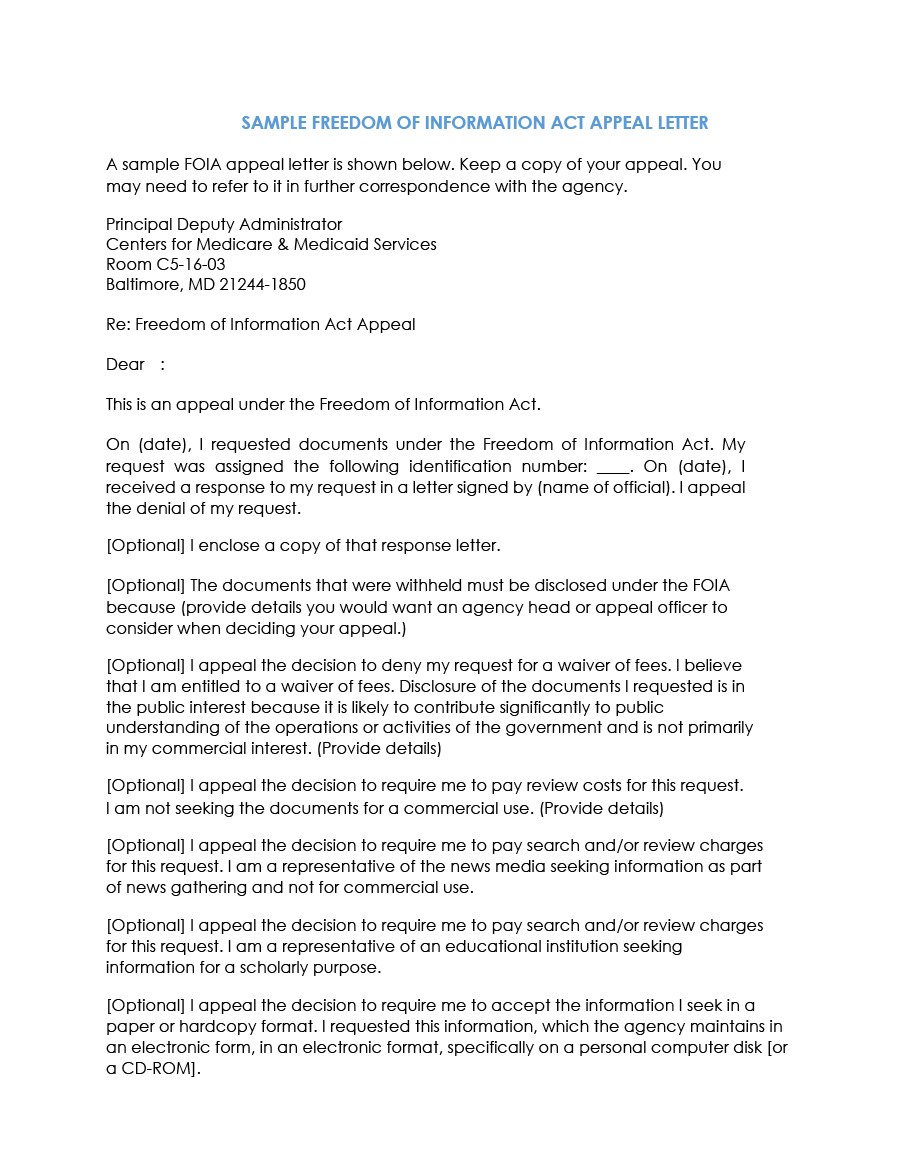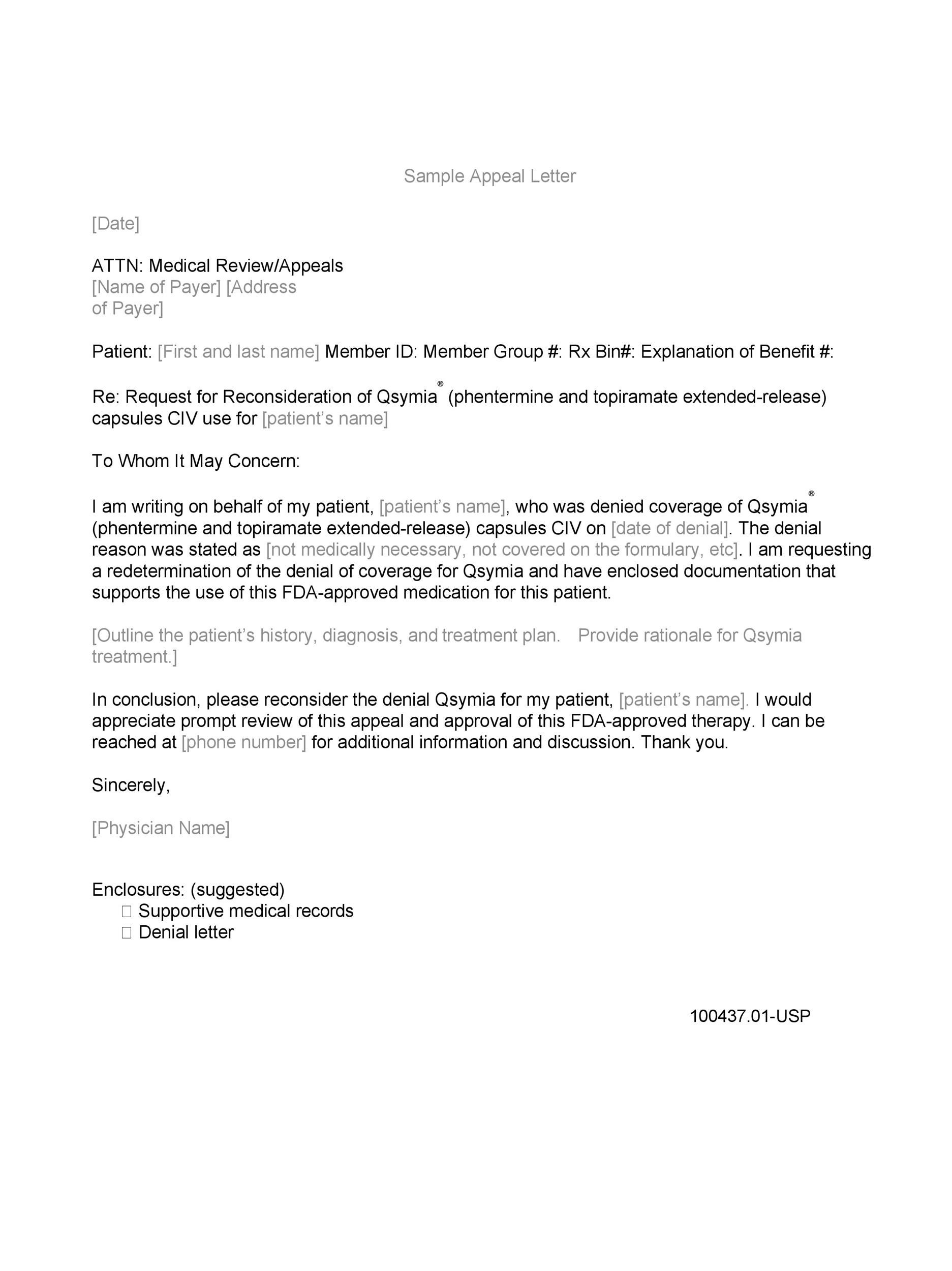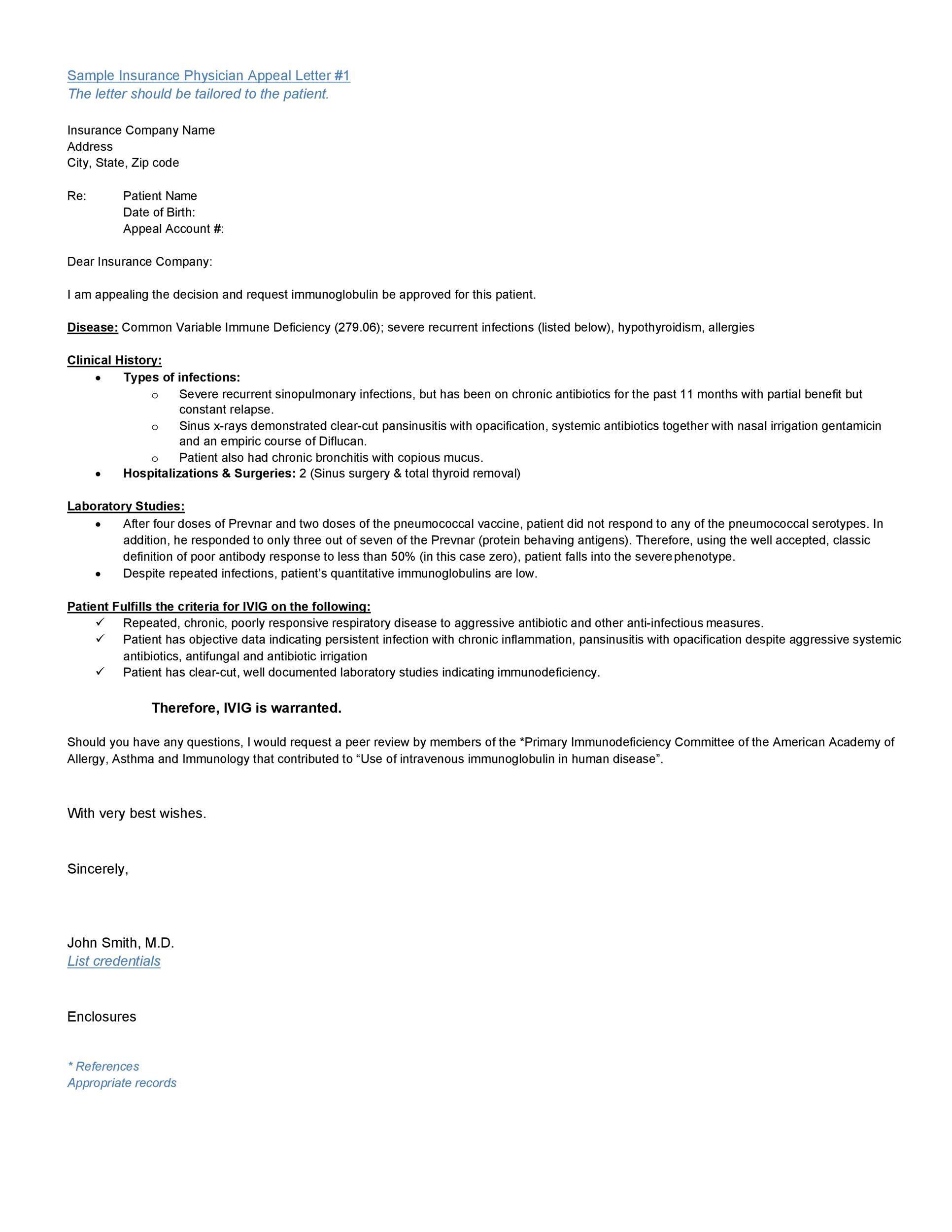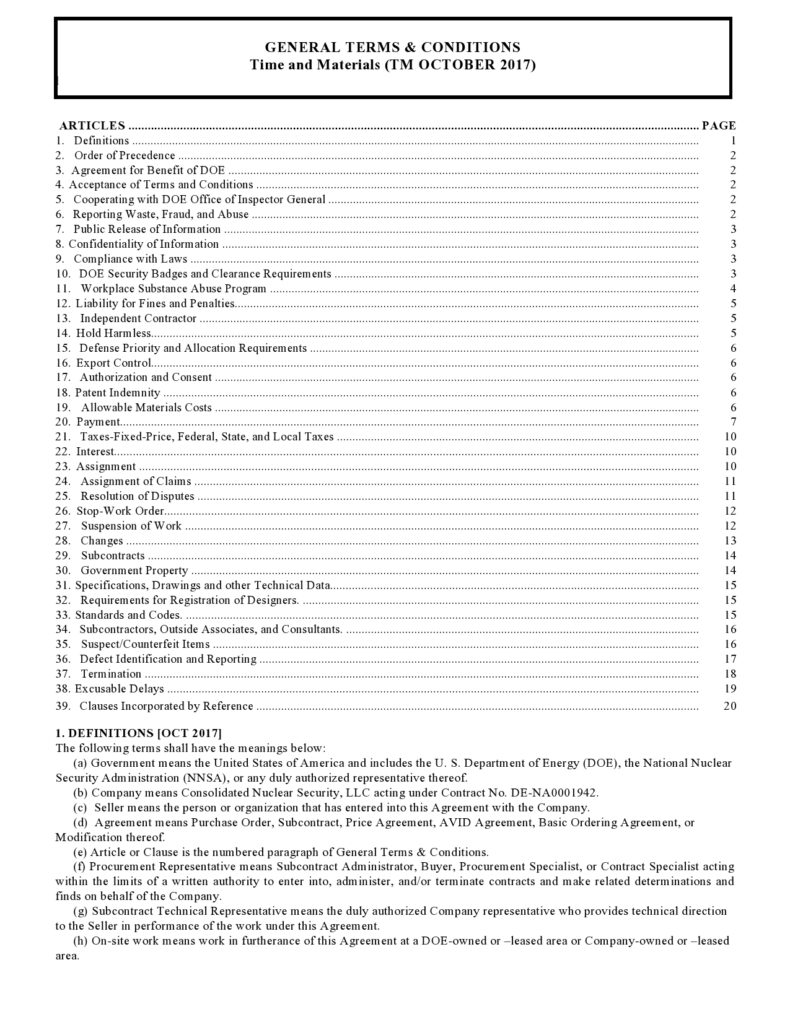Many employees are often reprimanded because of misbehavior or are underperforming in their work environment. The disciplinary action can range from suspension without pay to dismissal depending upon the gravity of their actions. But there’s always some leeway on appealing their predicament, and the best way to do this is through an appeal letter.
Table of Contents
Appeal Letters
An overview of appeal letters
An employee who wants to get reinstated to his position could write an appeal letter to his employer. The letter will state which decision he’s appealing and on what grounds. There are various types of appeal letters such as:
- An appeal against a warning
- An appeal against dismissal
- An appeal against redundancy
- An appeal against an employer decision
- Financial aid appeal letter
- Sap appeal letter
- Insurance appeal letter
- Academic appeal letter
The appeal letter format will usually include the following:
- Which decision is the subject of the appeal
- The reason for the appeal
- A request that the employee gets accompanied to the appeal hearing
Appeal Letter Formats
Basic steps to take when writing an appeal letter
In case an employee would feel that he has been unjustly treated, an appeal letter would give him the chance to dispute a decision rendered by his employer. The appeal letter format is the same as other business letters.
The employee must keep in mind that if any facts are on his side, then an appeal brought about by an unjust decision could be highly productive. Here are the basic steps to take when writing such a letter:
- Learn about the appeal process
First and foremost, the employee must find then review any appeal process that’s applicable to his case. In most instances, appeal information is part of the provided decision letter. In its absence, you can always check the website of the organization or contact the one who sent the decision letter.
Take into serious consideration the appeal deadline. This is critical because not conforming with this date could have your appeal dismissed outright. Also, make sure to keep any documentation of the case on file. This can be quite useful later if one decides a course of legal action. Make a copy of the letter of appeal before you submit it too. - Follow a business format
Sometimes, you can file an appeal using an online form. You can do this if instructed to do so. However, it’s best recommended that the employee writes the appeal letter using the standard, professional business format. Whether you’re writing a financial aid appeal letter, a SAP appeal letter or any other type of letter of appeal, it must contain:
date when you wrote the letter
the name of the recipient and his address
a greeting or salutation
the body of the letter
your name, signature, and contact information
Give the letter to the person in charge of granting appeals. For reasons which concern expediency and confidentiality, it’s not a good idea to address the letter using a general phrase. - Identify the grounds of your appeal
As aforementioned, there are different types of appeal letters. One made by an employee, an insurance appeal letter, an academic appeal letter, and so on. No matter what type you compose, you should:
clearly identify the legitimate reasons for why a particular decision needs reconsideration
should have a persuasive tone in the identification of errors committed by the officers who handled the matter
must identify any instances when the employee deemed that he got different treatment from other employees with the same offense
discuss why the result was unnecessarily harsh or too punitive - Present some persuasive arguments
The body of your letter should explain in detail the reasons why you’re appealing your case. Provide specific dates, places, times, and any witnesses who may testify and collaborate with your statements.
Arrange your facts in chronological order and explain the circumstances or the reasons for reconsideration. Don’t feel reluctant about mentioning any observed type of discrimination or favoritism. Also, it’s important to only stick to information significant to the appeal. - Provide relevant evidence
Keep in mind that the contents of your appeal letter should be well-substantiated and not based on hearsay. If you can provide documentation or statements signed by witnesses that can support your case or can cast suspicions on the fairness of the first decision, then attach these with your letter.
Also, consider that the one who will read your appeal can feel sympathetic but may feel hesitant to judge in your favor because of the lack of evidence that you’re truthful and correct in what you assert. - State the desired outcome
Don’t be afraid to express what you expect from your appeal. You need to make it clear whether you’re asking for a modification of the first decision or having it completely overturned.
In case where there are several probable solutions to the issue you had to face, indicate which of the resolutions you feel is most favorable or acceptable for you. Don’t forget to express your gratitude for your appeal’s consideration.
Financial Aid Appeal Letters
How to write an appeal letter?
One primary reason for writing an appeal letter is the opportunity to communicate your side of the predicament. Another important aim of an appeal letter is for the reconsideration of a disciplinary decision, and hopefully, it would get completely overturned.
You can make this possible if you follow certain protocols that can sway the decision in your favor. To start with, your letter should carry a courteous and clear tone. Here are more tips that you may consider when composing an appeal letter:
- Know where you should send the letter
Addressing your appeal letter to the wrong authority may get you into more trouble. Make sure that it ends up with the right person. For instance, if you appeal for wrongful termination, you should send it to your employer directly. Addressing the letter to lower-ranking personnel would only delay the addressing of your issue as the letter could pass through many hands. - Use a polite and professional tone
An appeal letter should carry a feeling of humility, so there’s no need to inject anger or some negative emotions in it. After getting reprimanded, you may feel upset but don’t express this negative feeling in your document. Express confidence and use persuasive language but never be too aggressive. To make sure that the letter threads on neutral ground, ask a colleague to read it and ask if it’s an appropriate appeal. - Admit when you’ve made any mistakes
Don’t cover up any of your mistakes. If you committed them, man up to them. Specifically, state where and what you did wrong and charge that to experience. - Make a statement about what you want to happen
Don’t hesitate to express the expectations in the letter. Clearly state what result you want to come out of it. Always be clear on what outcomes you want to see. - Only the facts matter
Remember to stick to the facts of your appeal. If you believe that some policies weren’t considered when the initial decision came out, indicate those policies. Also, attach any documents relevant to your appeal that could help your case. Don’t resort to emotional statements and stick with the actualities. - Keep the letter brief
Readers of appeal letters don’t want long narratives. Make your letter short, concentrate on the salient facts, state your predicament, state the reasons why you don’t agree with the decision, and what are the next steps.
Sap Appeal Letters
Submitting your appeal letter
Like in most cases, complete and proper documentation can give you a greater chance of success. That’s why when you submit the letter, you should attach such documentation. Include your identification documents along with identification which associates you to the recipient like membership cards or school IDs. Here are other steps to follow when submitting your letter:
- Proofread your letter
A poorly-written letter in both form and substance will not get taken seriously by the reader. If there are any grammatical errors and typos, the reader will take this against the writer. Read your letter, and if possible with a friend, to find any awkward phrasings or errors. - Make copies of the letter and the other documentation
After you finished everything, make a copy of all the documents for your personal records until hopefully, the issue will come to a resolution. Keep all these documents of the incident in a separate folder. You’ll never know when or if you’ll need them in the future. - Send your letter
It’s more advisable to mail your letter instead of giving it in person. With a certified mail, you will have proof of receipt as this type of mail will need a signature from you. The date your appeal got received may be a very piece of evidence later if you decide to file a lawsuit. - Follow-up
Following up on the letter is not inconveniencing the other party, especially if you have a signed certified mail of acceptance. Call to find out the status of your appeal and the timeline on when you would expect to hear from them. From there, you can make your plans accordingly. Should they request for more information or documents, submit these at the soonest possible time.

















































